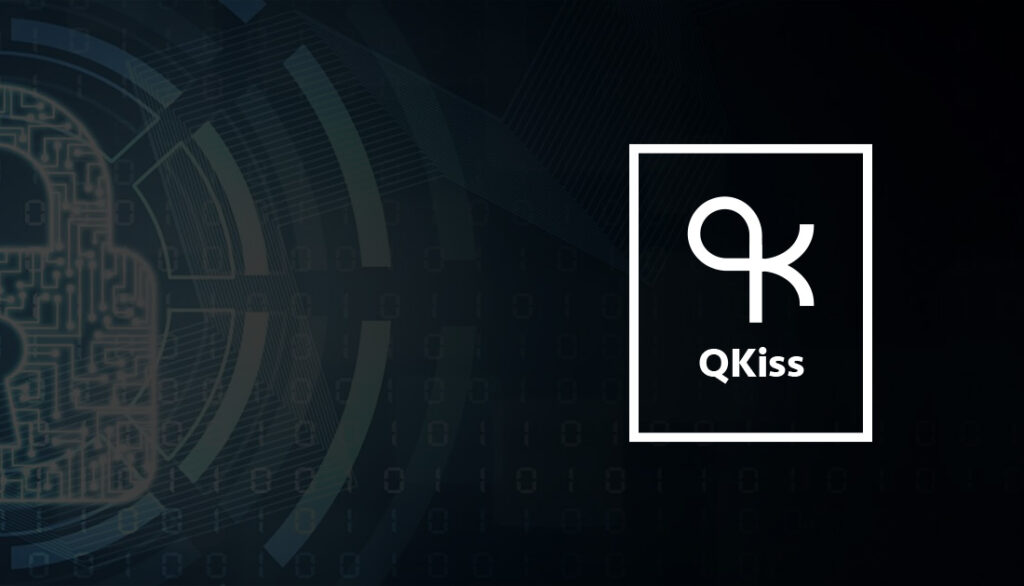Quantum Key Distribution


Modern society relies heavily on private telecommunications. Among the many activities that depend on it are e-banking, e-health, or secure government communications. However, modern encryption techniques used to establish privacy have limitations as they rely most often on the supposition that an eavesdropper has access to a limited computational power. This supposition depends on whether the eavesdropper is an individual or a state agency. Also, his computational power may be much larger in a decade (20-years-old communications are much easier to decrypt nowadays). Now, Quantum Key Distribution (QKD) offers a forever privacy guaranteed by the laws of physics.
Thanks to QKD, a spy trying to intercept some information is detected before a message is even sent. And this is achieved simply by adapting the emitter and receiver hardware of an optical link (no need to send guards all along your optical fiber). In practice, QKD is achieved with optical telecommunication links, either via optical fibers or via the propagation of light in vacuum (or in the atmosphere) for satellite links, where Exail’s solutions are used.
Exail provides reliable components (modulators, VOA, COH) and sub-systems (LAZ-LAB-NL) to implement CV-QKD, both for the transmitter side and the receiver side. The information is encoded in both the amplitude and the phase of laser pulses using our solutions: two amplitude modulation blocks AM1 and AM2 are cascaded with a phase modulation PM1.



Multi-level output driver DR-VE-10-MO versus electrical input level
Dedicated products
| Product | Specification | Datasheet | |
|---|---|---|---|
| ANalog Drivers | |||
| DR-VE-10-MO | 12 GHz VErsatile RF Amplifier | More info | |
| DR-AN-10-HO | 10 GHz Analog High Output Voltage Driver Module | More info | |
| O-Band | |||
| MXER1300-LN-10-PD-P-P-FA-FA-30dB | 1310 nm band 10 GHz High Extinction Ratio Intensity Modulator |
More info | |
| MX1300-LN-10-PD-P-P-FA-FA | 1310 nm band 10 GHz Intensity Modulator |
More info | |
| MPZ1300-LN-10-00-P-P-FA-FA | 1310 nm band 10 GHz Phase Modulator DC coupled option phase modulator |
More info | |
| C+L Bands | |||
| MPZ-LN-10-00-P-P-FA-FA | 1550 nm band 10 GHz Phase Modulator DC coupled option phase modulator |
More info | |
| NIR 800 nm Band | |||
| NIR-MX800-LN-10-00-P-P-FA-FA | 800 nm band 10 GHz Intensity Modulator |
More info | |
| NIR 800 nm Band | |||
| NIR-MPX800-LN-05-00-P-P-FA-FA | 800 nm band 10 GHz Phase Modulator |
More info | |
| NIR-MPX800-LN-10-00-P-P-FA-FA | 850 nm band 16 GHz Phase Modulator |
More info | |
| Photonic Solutions | |||
| LAZ-LAB-NL-1560 | 1560 nm wavelength Other wavelengths available in C-Band |
More info |
Publications
-
Practical continuous-variable quantum key distribution with composable security
Nature Communications volume 13, Article number: 4740 (2022)
See more -
Demonstration of Probabilistic Constellation Shaping for Continuous Variable Quantum Key Distribution
OFC Conference 2021, Washington, DC United States
See more -
Experimental Demonstration of High Key Rate and Low Complexity CVQKD System with Local Local Oscillator
Optical Fiber Communication Conference – January 2020
We experimentally demonstrate a 250MHz repetition rate Gaussian-modulated coherent-state CVQKD with local local oscillator implementation which is capable of realizing record 14.2 Mbps key generation in the asymptotic regime over 15km of optical fiber…
More info -
Orbital Angular Momentum States Enabling Fiber-based High-dimensional Quantum Communication
Quantum networks are the ultimate target in quantum communication, where many connected users can share information carried by quantum systems. The keystones of such structures are the reliable generation, transmission, and manipulation of quantum states. Two-dimensional quantum states, qubits, are steadily adopted as information units. However, high-dimensional quantum states, qudits, constitute a richer resource for future quantum networks, exceeding the limitations imposed by the ubiquitous qubits…
Download -
Continuous-variable quantum key distribution based on a plug-and-play dual-phase-modulated coherent-states protocol
We propose and experimentally demonstrate a continuous-variable quantum key distribution (CV-QKD) protocol using dual-phase-modulated coherent states. We show that the modulation scheme of our protocol works equivalently to that of the Gaussian-modulated coherent-states (GMCS) protocol, but shows better experimental feasibility in the plug-and-play configuration…
Download -
Polarization-multiplexing-based measurementdevice-independent quantum key distribution without phase reference calibration
Optica Vol. 5, No. 8 / August 2018
Reference-frame-independent measurement-device-independent quantum key distribution (RFI-MDI-QKD) can reduce the complexity of practical systems caused by the alignment of the reference frame. Lengthening the transmission distance and improving the system clock rate are essential in practical applications of QKD. ..
Read more -
Experimental demonstration of long-distance continuous-variable quantum key distribution
Nature Photonics volume 7, pages 378–381 (2013)
See more

